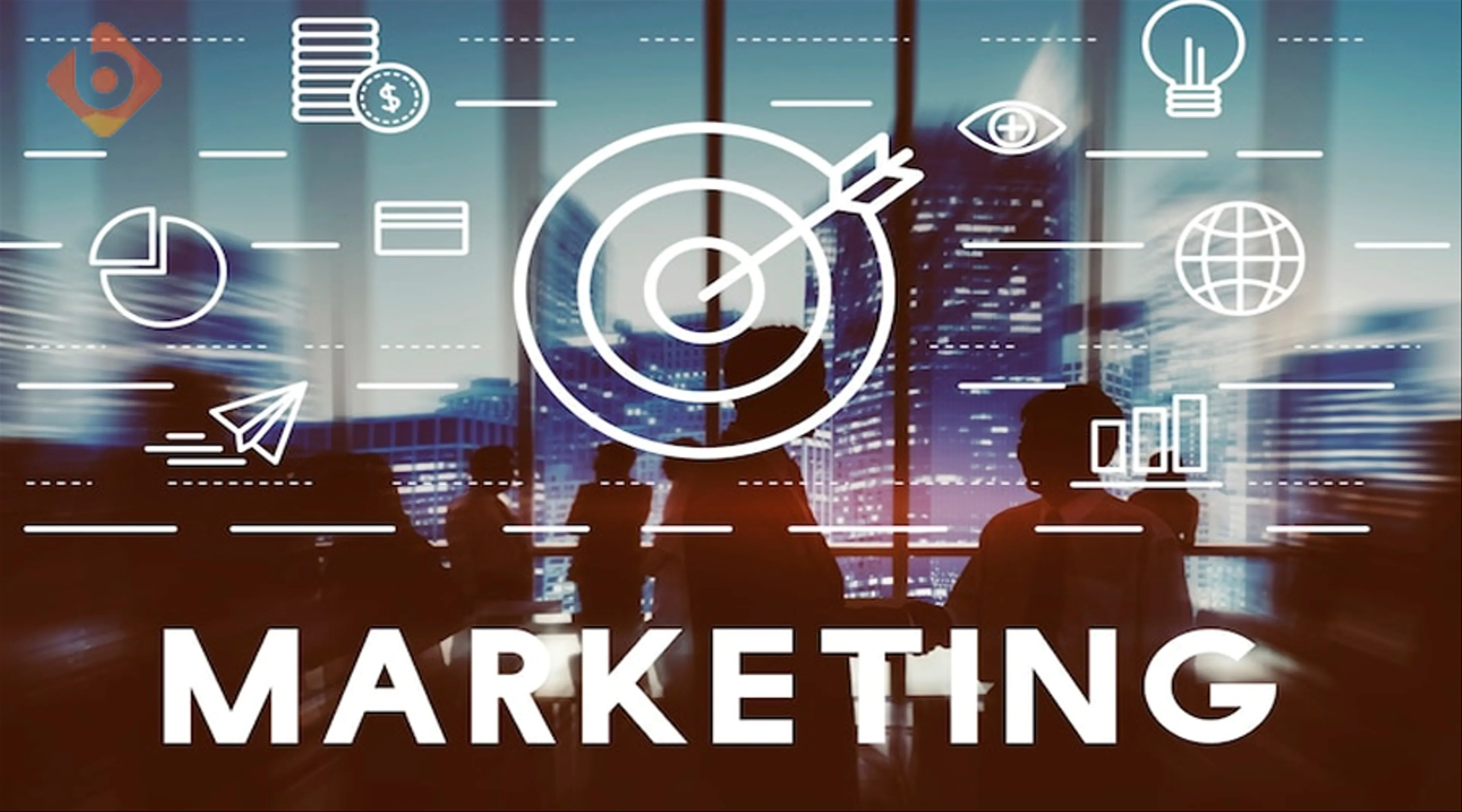Effective marketing strategies can help businesses increase sales, grow their customer base, enhance their brand image and reputation, and gain a competitive edge in the market.
In this essay, we will explore 10 effective marketing strategies that businesses can use to boost their sales in 2023 and beyond. These strategies are based on the latest trends, insights and best practices from various sources, such as Forbes1, Shopify and others. We will also provide some examples and tips on how to implement these strategies successfully.
1. Great telemetry and measurement
You wouldn’t fly a plane or launch a rocket without proper telemetry and measurement. Yet, in older eras of marketing, we’d often launch without sufficient instrumentation, leaving us without any capability to truly understand what’s going on.
Telemetry and measurement are essential for effective marketing, as they allow businesses to track and analyze the performance of their marketing campaigns, channels, activities and outcomes. They also enable businesses to optimize their marketing efforts based on data-driven insights and feedback.

What Is the Role of SEO in Digital Marketing?
Some of the key metrics that businesses should measure include
- Reach: The number of people who are exposed to your marketing messages or content.
- Engagement: The level of interaction and involvement that your audience has with your marketing messages or content.
- Conversion: The percentage of your audience who take a desired action after engaging with your marketing messages or content, such as making a purchase, signing up for a newsletter, downloading a resource, etc.
- Retention: The percentage of your customers who remain loyal and repeat their purchases or interactions with your business over time.
- Revenue: The amount of money that your business generates from your marketing efforts.
To measure these metrics effectively, businesses need to use various tools and platforms, such as Google Analytics, Facebook Pixel, Shopify Analytics, HubSpot, etc. These tools can help businesses collect, organize, visualize and report on their marketing data.
Some of the benefits of using great telemetry and measurement for marketing include:
- Improving decision making: Businesses can use data to make informed and evidence-based decisions about their marketing strategies, tactics and budgets.
- Enhancing customer experience: Businesses can use data to understand their customers’ needs, preferences, behaviors and feedback, and tailor their marketing messages and offers accordingly.
- Increasing efficiency and effectiveness: Businesses can use data to identify what works and what doesn’t in their marketing efforts, and focus on the most impactful and profitable activities.
- Boosting innovation and creativity: Businesses can use data to discover new opportunities, trends and insights that can inspire them to create new and better marketing solutions.
2. Lead with an inspiring purpose
We have found that operating as a purposeful company in a highly competitive market can be a differentiator and driver of brand consideration. The clients and candidates that we prospect are evaluating our attributes and offerings against others and find meaning in a commitment to solving endemic issues. For us, leading with an inspiring purpose is a way that we create meaningful connections.
Purpose is the reason why a business exists beyond making money. It is the positive impact that a business makes on its customers, employees, society and the environment. Purpose-driven marketing is the strategy of communicating and demonstrating a business’s purpose to its target audience.
Some of the benefits of leading with an inspiring purpose for marketing include:
- Building trust and credibility: Customers are more likely to trust and buy from businesses that have a clear and authentic purpose that aligns with their own values and beliefs.
- Creating differentiation and loyalty: Customers are more likely to choose and stick with businesses that have a unique and compelling purpose that sets them apart from their competitors.
- Attracting and retaining talent: Employees are more likely to join and stay with businesses that have a meaningful and inspiring purpose that motivates them to perform well.
- Driving innovation and growth: Businesses that have a strong purpose are more likely to innovate and grow by finding new ways to fulfill their mission and vision.
Some examples of businesses that lead with an inspiring purpose include:
- Patagonia: Patagonia is an outdoor clothing and gear company that has a purpose of "We’re in business to save our home planet". Patagonia uses its marketing to educate and inspire its customers to join its environmental and social causes, such as donating 1% of its sales to grassroots organizations, supporting regenerative organic agriculture, and encouraging customers to repair and reuse their products.
- Nike: Nike is a sports apparel and equipment company that has a purpose of "To bring inspiration and innovation to every athlete in the world". Nike uses its marketing to empower and celebrate its customers’ athletic achievements, aspirations and challenges, such as featuring diverse and inspiring athletes, creating motivational slogans and campaigns, and offering personalized products and services.
- Airbnb: Airbnb is an online marketplace that connects travelers with local hosts who offer accommodation and experiences. Airbnb has a purpose of "To create a world where anyone can belong anywhere". Airbnb uses its marketing to showcase and celebrate the diversity and richness of its community, such as featuring real stories of hosts and guests, promoting cultural exchange and social impact, and fostering a sense of belonging and connection.

3. Focus on relevant content, SEO and SEM
At the beginning of the year, individuals and businesses are looking for growth, so relevant content honed to solving business needs always performs well. Search engines have significantly updated their algorithms this year with a focus on improving the relevance and quality of search results. Content, search engine optimization (SEO) and search engine marketing (SEM) all go hand in hand, and these are my starting points for growth at the beginning of the year.
Content is the information and messages that businesses create and share with their audience through various channels and formats, such as blogs, videos, podcasts, ebooks, webinars, etc. Content marketing is the strategy of using content to attract, engage and convert customers.
SEO is the process of improving the visibility and ranking of a website or web page in organic (unpaid) search results on search engines, such as Google or Bing. SEO involves optimizing various elements of a website or web page, such as keywords, titles, headings, links, images, etc.
SEM is the process of using paid advertising to drive traffic and sales from search engines. SEM involves creating and managing ads that appear on search results pages or other websites based on keywords, bids, location, etc.
Some of the benefits of focusing on relevant content, SEO and SEM for marketing include:
- Increasing awareness and reach: Content, SEO and SEM can help businesses reach more potential customers who are searching for information or solutions related to their products or services.
- Generating leads and sales: Content, SEO and SEM can help businesses capture the interest and attention of their target audience and persuade them to take action, such as filling out a form, subscribing to a newsletter, requesting a demo, making a purchase, etc.
- Establishing authority and trust: Content, SEO and SEM can help businesses demonstrate their expertise and credibility in their industry or niche by providing valuable and relevant information or solutions to their audience’s problems or needs.
- Building relationships and loyalty: Content, SEO and SEM can help businesses nurture and retain their existing customers by providing them with ongoing support, education, entertainment or inspiration.

Some examples of businesses that focus on relevant content, SEO and SEM include:
- HubSpot: HubSpot is a software company that provides tools and resources for inbound marketing, sales and customer service. HubSpot uses content marketing to attract and educate its audience on various topics related to its products or services, such as blogging, email marketing.
- HubSpot: HubSpot is a software company that provides tools and resources for inbound marketing, sales and customer service. HubSpot uses content marketing to attract and educate its audience on various topics related to its products or services, such as blogging, email marketing, social media marketing, lead generation, etc. HubSpot also uses SEO and SEM to optimize its website and web pages for relevant keywords and drive more traffic and conversions from search engines.
- Netflix: Netflix is a streaming service that offers a wide variety of movies, shows, documentaries and original content. Netflix uses content marketing to create and distribute engaging and entertaining content that showcases its offerings and appeals to its audience’s interests and preferences, such as trailers, teasers, behind-the-scenes, interviews, etc. Netflix also uses SEO and SEM to improve its visibility and ranking on search engines and attract more subscribers and viewers.
- Zappos: Zappos is an online retailer that sells shoes, clothing and accessories. Zappos uses content marketing to provide helpful and relevant information and advice to its customers and prospects on various topics related to its products or categories, such as fashion trends, style tips, product reviews, etc. Zappos also uses SEO and SEM to enhance its website and web pages for user experience and search engine performance and drive more traffic and sales.
- Demystifying Off-Page SEO: Building Backlinks That Matter
4. Explore new mediums
Explore new mediums that may have been overlooked. Analyze what didn’t perform this year, and allocate some of that budget to test something different. For example, more people are working from home now, and direct mail marketing has been performing better than ever.
Mediums are the channels or platforms that businesses use to communicate and deliver their marketing messages or content to their audience. Examples of mediums include websites, social media, email, podcasts, videos, blogs, etc.
Exploring new mediums can help businesses reach new or existing customers in different or innovative ways. It can also help businesses diversify their marketing mix and avoid relying too much on one or a few mediums.
Some of the benefits of exploring new mediums for marketing include:
- Expanding audience and market: Exploring new mediums can help businesses access new segments or niches of customers who may not be using or familiar with their existing mediums.
- Increasing engagement and retention: Exploring new mediums can help businesses provide more variety and value to their customers by offering them different types of content or experiences that suit their preferences or needs.
- Enhancing brand image and reputation: Exploring new mediums can help businesses showcase their creativity and innovation by adopting the latest trends or technologies in their industry or niche.
- Improving performance and results: Exploring new mediums can help businesses improve their marketing performance and results by finding more effective or efficient ways to reach and convert their customers.
Some examples of new mediums that businesses can explore include:
- Voice search: Voice search is the use of voice commands to search for information or solutions on search engines or devices, such as Google Assistant, Siri, Alexa, etc. Voice search is becoming more popular and convenient as more people use smart speakers, smartphones or other voice-enabled devices. Businesses can optimize their website and web pages for voice search by using natural language, long-tail keywords, structured data, etc.
- Augmented reality (AR): AR is the use of technology to overlay digital elements onto the real world through a device’s camera or screen, such as filters, stickers, animations, etc. AR can enhance the customer experience by providing them with interactive and immersive content or features that enhance their reality. Businesses can use AR to showcase their products or services in a realistic way, such as allowing customers to try on clothes or accessories virtually, see how furniture or decor would look in their home, etc.
- Podcasts: Podcasts are audio files that can be downloaded or streamed online on various topics or genres. Podcasts can provide valuable and engaging content to customers who prefer listening over reading or watching. Businesses can use podcasts to share their stories.
- Podcasts: Podcasts are audio files that can be downloaded or streamed online on various topics or genres. Podcasts can provide valuable and engaging content to customers who prefer listening over reading or watching. Businesses can use podcasts to share their stories, insights, tips, interviews, etc. with their audience and establish their authority and trust in their industry or niche.
- TikTok: TikTok is a social media app that allows users to create and share short videos with music, filters, effects, etc. TikTok is one of the most popular and fastest-growing apps in the world, especially among younger generations. Businesses can use TikTok to create and distribute entertaining and viral content that showcases their brand personality, products or services, culture, etc. and reach a large and active audience.
5. Be present with clients and prospects
Sales is a participation sport that happens when you are present. Be present with your clients and prospects. Be present with an attitude of "what more can I do" and "how can I be of service." These questions will help you focus on the outcomes for the other party and are the basis of a solid relationship.
Being present with clients and prospects means being attentive, responsive and proactive in communicating and interacting with them. It also means being empathetic, helpful and supportive in understanding and meeting their needs and expectations.

Some of the benefits of being present with clients and prospects for marketing include:
- Building rapport and trust: Being present with clients and prospects can help businesses create a positive and lasting impression on them by showing that they care about them and value their time and attention.
- Increasing satisfaction and loyalty: Being present with clients and prospects can help businesses deliver a high-quality customer experience by providing them with timely and relevant information, solutions or feedback.
- Generating referrals and testimonials: Being present with clients and prospects can help businesses encourage them to spread positive word-of-mouth about their brand, products or services to their friends, family or network.
- Creating opportunities and sales: Being present with clients and prospects can help businesses identify and seize new opportunities to upsell, cross-sell or renew their products or services to them.
Some examples of ways to be present with clients and prospects include:
- Sending personalized emails or messages: Businesses can send personalized emails or messages to their clients and prospects to check in on them, follow up on their inquiries or issues, offer them additional value or assistance, etc.
- Making phone calls or video calls: Businesses can make phone calls or video calls to their clients and prospects to have more direct and personal conversations with them, such as asking for feedback, giving updates, resolving problems, etc.
- Hosting webinars or events: Businesses can host webinars or events to educate, inform or entertain their clients and prospects on various topics related to their products or services, such as new features, best practices, case studies, etc.
- Sending gifts or cards: Businesses can send gifts or cards to their clients and prospects to show their appreciation, gratitude or recognition for their business, loyalty or achievements.
- In conclusion, effective marketing strategies are vital for businesses aiming to increase their sales and achieve sustainable growth. By understanding your target audience, embracing digital marketing, creating compelling content, personalizing your marketing efforts, and exploring strategic collaborations, you can elevate your brand, attract more customers, and drive sales. As the marketing landscape continues to evolve, staying innovative and adaptable will be key to maintaining a competitive edge and achieving long-term success.
